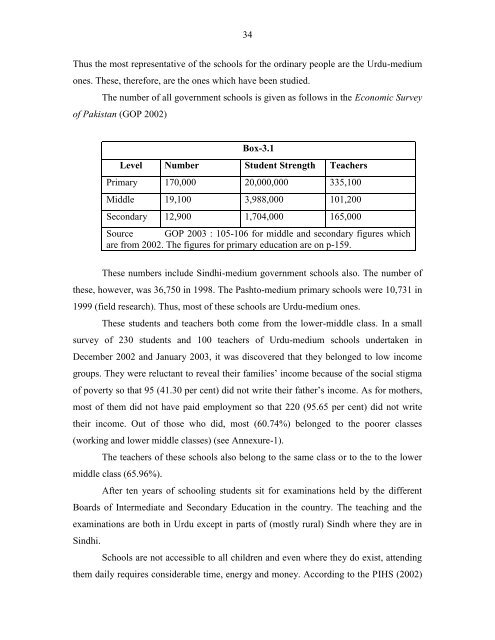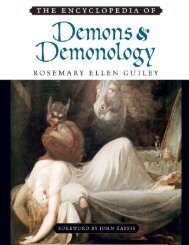DENIZENS OF ALIEN WORLDS
danizen1
danizen1
- No tags were found...
You also want an ePaper? Increase the reach of your titles
YUMPU automatically turns print PDFs into web optimized ePapers that Google loves.
34<br />
Thus the most representative of the schools for the ordinary people are the Urdu-medium<br />
ones. These, therefore, are the ones which have been studied.<br />
The number of all government schools is given as follows in the Economic Survey<br />
of Pakistan (GOP 2002)<br />
Box-3.1<br />
Level Number Student Strength Teachers<br />
Primary 170,000 20,000,000 335,100<br />
Middle 19,100 3,988,000 101,200<br />
Secondary 12,900 1,704,000 165,000<br />
Source GOP 2003 : 105-106 for middle and secondary figures which<br />
are from 2002. The figures for primary education are on p-159.<br />
These numbers include Sindhi-medium government schools also. The number of<br />
these, however, was 36,750 in 1998. The Pashto-medium primary schools were 10,731 in<br />
1999 (field research). Thus, most of these schools are Urdu-medium ones.<br />
These students and teachers both come from the lower-middle class. In a small<br />
survey of 230 students and 100 teachers of Urdu-medium schools undertaken in<br />
December 2002 and January 2003, it was discovered that they belonged to low income<br />
groups. They were reluctant to reveal their families‘ income because of the social stigma<br />
of poverty so that 95 (41.30 per cent) did not write their father‘s income. As for mothers,<br />
most of them did not have paid employment so that 220 (95.65 per cent) did not write<br />
their income. Out of those who did, most (60.74%) belonged to the poorer classes<br />
(working and lower middle classes) (see Annexure-1).<br />
The teachers of these schools also belong to the same class or to the to the lower<br />
middle class (65.96%).<br />
After ten years of schooling students sit for examinations held by the different<br />
Boards of Intermediate and Secondary Education in the country. The teaching and the<br />
examinations are both in Urdu except in parts of (mostly rural) Sindh where they are in<br />
Sindhi.<br />
Schools are not accessible to all children and even where they do exist, attending<br />
them daily requires considerable time, energy and money. According to the PIHS (2002)












